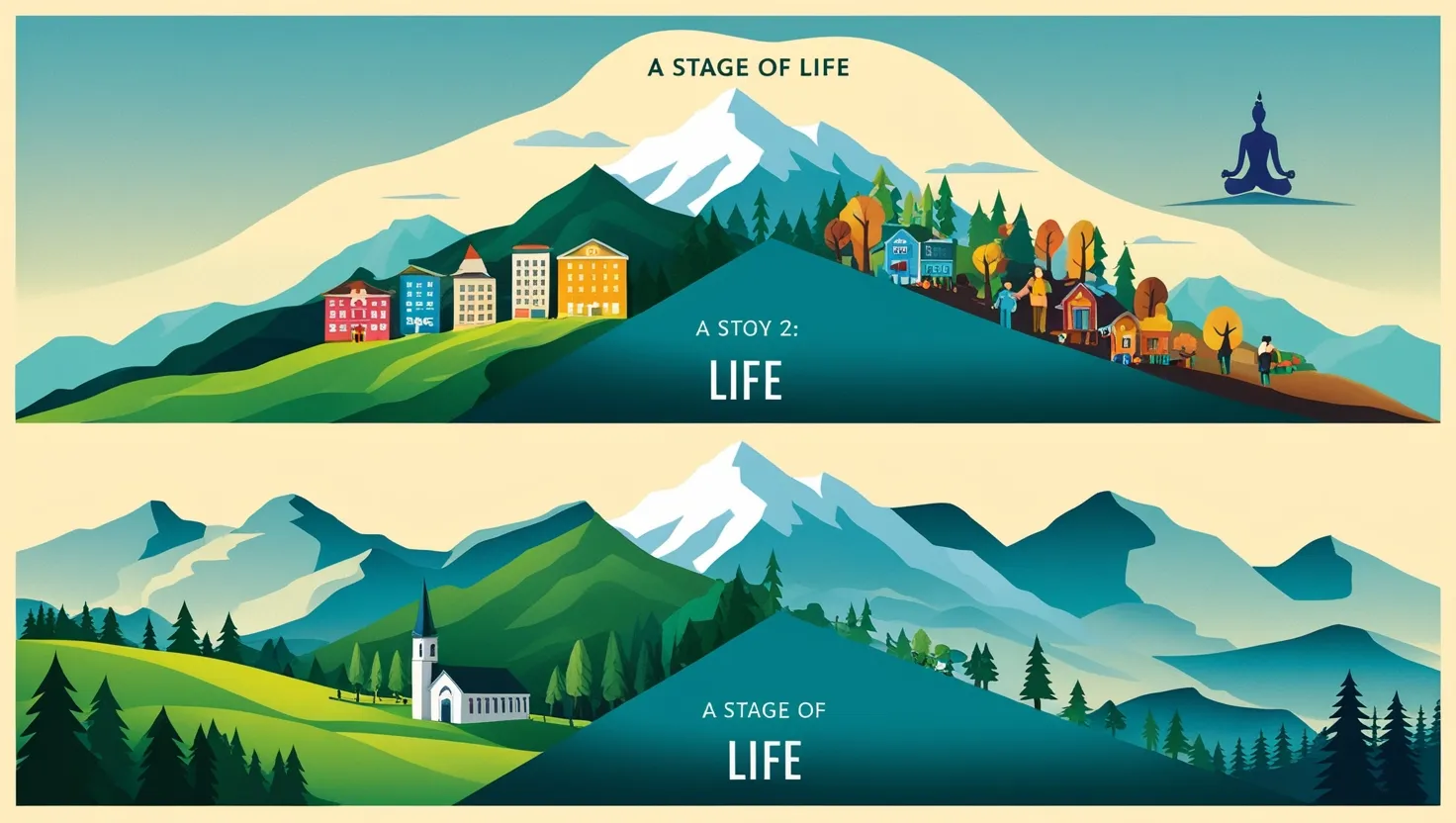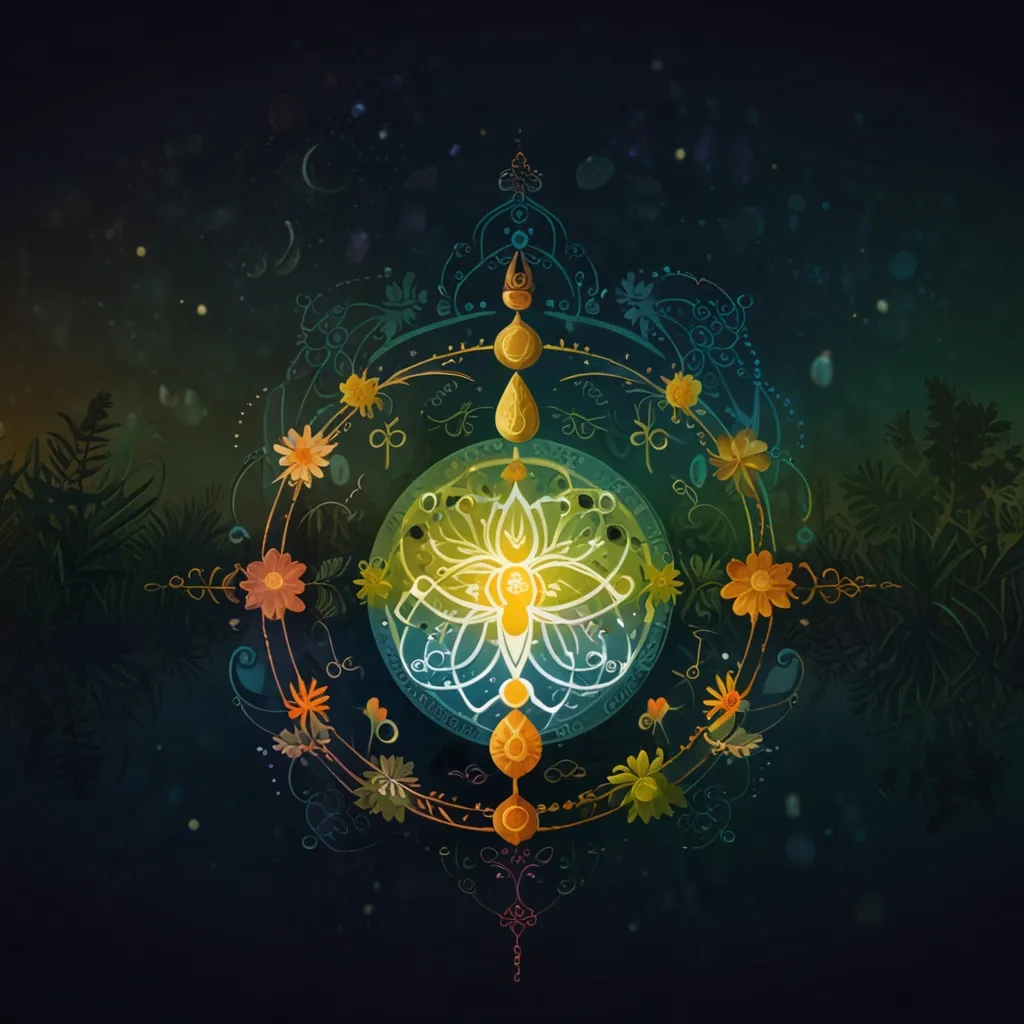When I imagine the layers of human existence outlined in Hindu philosophy, I see more than just a spiritual metaphor—I see a practical manual for living fully, from the skin we inhabit to the rarest moments of bliss. The koshas, these five sheaths, give us a map for understanding who and what we are beyond appearances, habits, even memories. The essence of this model lies not in division but in connection. It feels as if the Upanishads drafted these layers like a blueprint, encouraging us to inquire: Am I aware of the sheath I’m experiencing right now?
“Know thyself, and thou shalt know the universe and God.” This ancient maxim takes new life when we use the koshas as an inner compass. The annamaya kosha—the physical body—receives the most attention in modern culture. Diets, exercise regimes, beauty routines, and even medical science orbit around this sheath. But what I find endlessly intriguing is how ancient sages saw this layer as fundamentally temporary and impersonal. It is only borrowed matter, destined for return. Have you ever wondered what it means to truly care for your body if you simultaneously know it will change, age, and eventually disappear?
Just a step inward, the pranamaya kosha invites us to sense the rhythm carried by breath. Here, something magical happens: the mind and body entwine, but energy rules the relationship. So often, we disregard our vital forces in pursuit of mental stimulation. Yet, ancient breath practices teach us that a single conscious inhalation can influence feelings, perception, and even choice. In contemporary healing, from breathwork to acupuncture, echoes of this wisdom surface again. What’s possible when you see energy not as mystical fluff but tangible power that sustains every thought, every heartbeat?
To me, the third sheath—manomaya kosha—serves as headquarters for stories and reactions. Our thoughts swirl with judgments, hopes, fears, colors from experience and expectation. But have you ever sat with your mind long enough to notice how those thoughts create reality, how moods and beliefs literally sculpt perception? Modern neuroscience speaks of neuroplasticity; ancient sages spoke of mind as a sheath—an ever-changing atmosphere that can be stilled or transformed. Meditation offers simple tools: can you watch your thoughts pass by, like clouds, without boarding every one?
The vijnanamaya kosha, the wisdom sheath, feels like a hidden reservoir that most of us tap only by accident. “The intuitive mind is a sacred gift and the rational mind is a faithful servant,” said Einstein. Yet, education and society rarely train us to trust intuition, creativity, or subtle knowing. Instead, we’re often rewarded for logic, structure, and proof. The Upanishads suggest that true discernment—viveka—transcends facts. It arises from silence, from noticing patterns invisible to others. How often do you pause and consult the quiet voice within, that sense of natural alignment or misalignment with a choice?
The fifth sheath, anandamaya kosha, is perhaps the most elusive yet the most profound. Bliss need not be ecstatic or dramatic; it often whispers. Many chase happiness only to find it slips away with circumstance. Yet, the kosha model says there exists an innate joy beneath conditions—a sweetness of self-awareness. The poets and mystics repeatedly point here. “Happiness is the spiritual experience of living every minute with love, grace and gratitude,” said Denis Waitley. I reflect: Is it possible that bliss exists not as something earned, but as something uncovered when all other sheaths quiet down?
The brilliance of the kosha map is how these layers interact and feed each other. Physical pain disturbs the mind; mental agitation exhausts energy; lack of intuition clouds judgment; absence of bliss breeds anxiety. Conversely, a moment of insight can inspire physical healing; an experience of pure presence can replenish lost vitality. Each layer influences, supports, and limits the others. This is why when something feels off, it helps to ask: Is this a body issue, a breath issue, a mind issue, a wisdom issue, or a bliss issue?
Consider how the kosha model shakes up conventional self-care. Modern wellness often promotes singular solutions—diet for the body, therapy for the mind, meditation for the spirit. But ancient wisdom asks us to be more inquisitive. If I’m restless, is my breath shallow? If my reasoning is cloudy, is my mind overloaded or my body exhausted? If joy seems distant, have I gone too long without quiet reflection? Integrating these questions into daily life means treating oneself as a whole, not as parts in isolation. How would daily life change if every challenge became an invitation to explore layers rather than chase remedies?
Another fascinating lens on the koshas is how they relate to identity. In psychology, we’re told to build strong self-concept, to define boundaries and desires. Yet the kosha framework says our deepest nature precedes identity; it is the witness, the observer behind every sheath. “There is a light that shines beyond all things on earth, beyond us all, beyond the heavens, beyond the highest, the very highest heavens. This is the light that shines in your heart.” This is how the Upanishads see our real nature—not a set of labels or stories, but pure awareness watching the theater of sheaths.
Science now hints at the utility of this ancient map. Research on mind-body medicine reveals that states of consciousness influence gene expression, healing rates, and even pain perception. The study of energy fields in biophysics echoes pranamaya kosha. Mindfulness practices align with manomaya kosha’s power to tame mental storms. Decision science and intuition research touch the realm of vijnanamaya kosha. Even the pursuit of meaning and purpose connects to that quiet bliss spoken of as anandamaya kosha. It seems the kosha map, once reserved for monks and sages, is becoming a bridge between spiritual wisdom and scientific curiosity.
Have you ever noticed how your sense of self shifts depending on your situation? The koshas say this is natural—sometimes you feel dense and physical, sometimes light and energetic, sometimes cluttered with thoughts, sometimes inspired or simply at peace. The challenge, and the invitation, is to remember that beneath all these fluctuations there is an observer, unchanging, curious, and free.
The journey through the koshas isn’t linear or one-way. It’s spiral and interactive. You might enter a meditation simply aware of your breath (pranamaya kosha) and find that, after some minutes, old memories appear (manomaya kosha), followed by a flash of deep clarity (vijnanamaya kosha), and—rarely—a gentle wash of contentment (anandamaya kosha). At the end, you open your eyes feeling somehow different, all five layers subtly aligned.
“The mind is everything. What you think you become,” said Buddha. When you use the kosha framework, it becomes possible to notice which layer is dominating your experience, which is whispering for attention. Pausing and asking, Which kosha am I living from right now? can help break cycles of stress, confusion, or even stagnation.
One unconventional perspective often missed is how the kosha model empowers us to navigate suffering without denial. If pain arises in the annamaya kosha, you don’t pretend it’s not there, but you also don’t become only the pain. If grief or anger shows up in manomaya kosha, you observe, honor, and allow insight to soften its edges. If stagnation sits in pranamaya kosha, breathwork can stir the energy without force. The beauty is in seeing problems not as personal failings but as signals from a particular sheath—each one asking for care, curiosity, and sometimes surrender.
Questions worth asking: Is my mind clouded because my body is tired? Is my energy depleted because my emotions are heavy? Have I stopped trusting intuition because I’m too busy to pause? Do I miss bliss because I chase it instead of letting it be revealed? These are the kinds of playful, yet practical inquiries the kosha model inspires.
“Our essential nature is pure consciousness, the source of all joy and insight.” Each day, I try to remember this not as a final destination but as a subtle encouragement. The koshas aren’t obstacles—they are expressions, pathways, hints of a reality where all layers sing together. The invitation is simple: experience each sheath fully, explore what helps each one flourish, and let awareness rest as the silent witness.
As the world grows ever noisier, the kosha approach offers relief without retreat. Instead of withdrawing from life, it asks us to engage with each layer mindfully, to sense the fullness available even in ordinary moments. Here, wisdom lies not only in spiritual practice but in the intimacy of being alive—of feeling the body, sensing the breath, observing the mind, listening for intuition, residing in quiet happiness.
Living with the koshas becomes a practice of mapping one’s own consciousness anew each day. As I explore this ancient cartography, I learn that the journey is never about arriving somewhere else, but about seeing here with fresh eyes. The five sheaths, so beautifully described in the Upanishads, remind me: underneath all the layers, I am the witness, free to experience, to inquire, to simply be.






